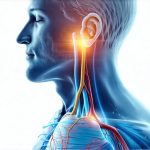Nausea is an incredibly common experience, impacting nearly everyone at some point in their lives. It’s more than just a discomfort; it’s a complex physiological response that signals something isn’t quite right within the body. Often dismissed as a temporary inconvenience, persistent or severe nausea can significantly disrupt daily life and even indicate underlying health issues. While many associate nausea primarily with problems “higher up” – the brain, inner ear, or stomach acid reflux – there’s growing recognition of the profound influence our gut microbiome and its associated pH levels play in triggering and modulating this unpleasant sensation. Understanding these connections is crucial for developing more holistic approaches to managing and preventing nausea.
The traditional view of nausea often focuses on emetic receptors triggered by toxins, motion sickness, or psychological stress. However, this overlooks the intricate bidirectional communication between the gut and the brain – known as the gut-brain axis. This axis isn’t a simple one-way street; instead, it’s a complex network involving nerves (like the vagus nerve), hormones, immune responses, and crucially, the composition of our gut microbiome. The health and balance of this microbiome are intimately linked to the pH level within different parts of the digestive system. Disruptions in gut pH can destabilize the microbial ecosystem, leading to imbalances that contribute to inflammation, altered motility, and ultimately, nausea. This article will delve into the specific role gut pH plays in the development of nausea, exploring how it affects digestion, microbiome health, and potential strategies for mitigation.
The Interplay Between Gut pH and Digestion
The digestive system isn’t a single entity with a uniform pH level; rather, it exhibits a gradient along its length. This varying acidity is essential for optimal digestion and nutrient absorption. The stomach, for example, maintains a highly acidic environment (pH between 1.5 and 3.5) thanks to hydrochloric acid production. This low pH serves several crucial functions: it breaks down proteins, activates digestive enzymes like pepsin, and importantly, acts as a barrier against harmful pathogens that enter the body through food. As chyme – partially digested food – moves into the small intestine, the pH gradually increases (to between 7-9) due to pancreatic secretions and bile acids. This alkaline environment is optimal for enzymatic breakdown of carbohydrates and fats. Finally, in the large intestine, the pH becomes slightly acidic again (around 6.0 – 7.0), facilitating fermentation by gut bacteria.
Any significant shift from these normal ranges can disrupt digestive processes and contribute to nausea. Hypochlorhydria, or low stomach acid, is a common issue, particularly as we age or with certain medication use (like proton pump inhibitors). When the stomach isn’t acidic enough, protein digestion is impaired, leading to bloating, indigestion, and potentially bacterial overgrowth in the small intestine (SIBO – Small Intestinal Bacterial Overgrowth). This SIBO can then produce gas and toxins that trigger nausea. Conversely, excessive acidity or rapid gastric emptying can also cause discomfort and contribute to nausea, particularly if it overwhelms the buffering capacity of the small intestine. Maintaining this delicate pH balance is critical for smooth digestive function.
Furthermore, the speed of digestion itself impacts nausea susceptibility. If food remains in the stomach too long due to insufficient acid production, it can ferment, producing gases that cause bloating and nausea. Conversely, if food moves through too quickly (often a result of hyperacidity or stress), the body doesn’t have enough time to properly absorb nutrients, which can also trigger nauseous feelings. The gut’s pH level is a key determinant in regulating these digestive speeds.
How Gut Microbiome Composition Impacts pH
The gut microbiome—the trillions of bacteria, fungi, viruses and other microorganisms residing within our digestive tract—plays an active role in maintaining the appropriate pH levels throughout the GI system. Different bacterial species thrive at different pH ranges, creating a complex interplay that influences overall gut health. Bifidobacteria and Lactobacilli, often considered “good” bacteria, produce lactic acid as a byproduct of their metabolism, contributing to the slightly acidic environment in the large intestine which supports their growth and inhibits pathogenic organisms.
Conversely, an imbalance in the microbiome – known as dysbiosis – can disrupt this pH regulation. When harmful bacteria proliferate, they often release byproducts that increase intestinal pH, creating a more favorable environment for them to thrive while suppressing beneficial species. This dysbiosis is frequently linked to nausea and vomiting, not just through direct toxin production but also via increased inflammation of the gut lining. Chronic stress, poor diet (high in processed foods and sugar), antibiotic use, and certain medications can all contribute to dysbiosis and subsequent pH imbalances. Understanding the role of gut microbiome diversity is crucial here.
Restoring a healthy microbiome often involves dietary changes that promote the growth of beneficial bacteria. Fermented foods like yogurt, kefir, sauerkraut, and kimchi are naturally rich in probiotics—live microorganisms that can help repopulate the gut with friendly flora. Prebiotic fibers (found in foods like onions, garlic, bananas, and asparagus) provide nourishment for these probiotic bacteria, further enhancing their growth and activity. This dietary approach assists in re-establishing a balanced pH environment within the gut. Gut health in food reactions can significantly impact this process.
The Vagus Nerve Connection & Nausea Signaling
The vagus nerve is a critical component of the gut-brain axis, serving as a direct communication pathway between the digestive system and the brain. It relays information about the state of the gut – including pH levels, microbial composition, and inflammation – to the brain’s nausea center (the area postrema). When the vagus nerve detects imbalances in gut pH or signs of dysbiosis, it can trigger signals that lead to feelings of nausea.
Specifically, changes in gut pH can directly influence vagal afferent signaling. An increase in intestinal pH, often associated with SIBO and dysbiosis, activates receptors on vagal nerve endings. These activated receptors transmit signals to the brainstem, initiating the cascade of events that result in nausea and potentially vomiting. This explains why individuals experiencing SIBO or chronic gut inflammation are more prone to frequent episodes of nausea.
Interestingly, strategies aimed at modulating the vagus nerve can help reduce nausea. Vagal modulation techniques, such as deep diaphragmatic breathing exercises, meditation, and even cold water immersion, have been shown to improve vagal tone – essentially strengthening the communication between the gut and brain. This increased vagal tone can dampen the signals triggered by gut pH imbalances, leading to a reduction in nausea symptoms. Gut biofeedback is one method gaining traction for this purpose.
Dietary Strategies for Gut pH Balance
Diet plays an undeniable role in influencing gut pH and, consequently, nausea susceptibility. A diet rich in processed foods, sugar, and unhealthy fats can disrupt the delicate balance of the microbiome, leading to increased intestinal permeability (“leaky gut”) and inflammation—both contributing factors to altered pH levels. Conversely, a whole-food based diet focused on supporting microbial diversity is key for maintaining optimal gut health.
Here are some dietary strategies to consider:
- Increase Fiber Intake: Soluble fiber (found in oats, beans, apples) feeds beneficial bacteria and helps regulate intestinal pH. Aim for 25–30 grams of fiber per day.
- Incorporate Fermented Foods: Regularly consuming fermented foods introduces probiotics that help restore a balanced microbiome and maintain healthy gut acidity.
- Limit Sugar and Processed Foods: These feed harmful bacteria, leading to dysbiosis and pH imbalances.
- Stay Hydrated: Water is essential for proper digestion and helps maintain the integrity of the gut lining.
- Consider Food Intolerances: Identifying and eliminating food intolerances can reduce inflammation and improve gut health.
Beyond diet, certain supplements may also be helpful in supporting gut pH balance. Betaine HCl supplementation (under professional guidance) can help increase stomach acidity for individuals with hypochlorhydria. However, self-treating with Betaine HCl is not recommended as it could exacerbate issues if the problem isn’t low stomach acid. Probiotic supplements, carefully chosen based on individual needs and microbiome analysis (if available), can also contribute to restoring a healthy microbial ecosystem and supporting optimal gut pH levels. It’s important to remember that supplementation should always be discussed with a healthcare professional. The impact of gut permeability on these processes shouldn’t be overlooked.
Ultimately, understanding the intricate relationship between gut pH, microbiome health, and nausea is crucial for developing effective management strategies. By focusing on dietary adjustments, lifestyle modifications, and potentially targeted supplementation (with professional guidance), individuals can work towards restoring gut balance and reducing their susceptibility to this debilitating symptom. Food sensitivity could be a major underlying factor here. A nutritionist or dietician can provide personalized guidance, potentially as part of cancer care—understanding the role of nutritionists in cancer care.


















